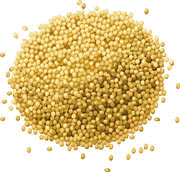International Sorghum and Millet Collaborative Research Support Program (INTSORMIL CRSP)
Date of this Version
9-27-1996
Document Type
Article
Citation
1997 INTSORMIL and ICRISAT
Abstract
In 1971, an international symposium, "Sorghum in the Seventies", organized by the All India Coordinated Sorghum Improvement Project with support from the Indian Council of Agricultural Research and the Rockefeller Foundation was held in Hyderabad, India. The symposium reviewed the current knowledge base of the scientific, production and nutritional aspects of sorghum as a crop and as a human food. In 1981, ICRISAT, INTSORMIL, and the Indian Council of Agricultural Research (ICAR) sponsored "Sorghum in the Eighties", an international symposium at ICRISAT Center in India, to review the achievements accomplished in sorghum research during the preceding 10 years. They reviewed sorghum's role as an important cereal food, feed, construction material, and fuel in the developed and developing countries. In 1994, after discussion among INTSORMIL and ICRISAT scientists, it was recognized that an international meeting on the genetic improvement of grain sorghum and pearl millet was needed and would be strongly supported by the international sorghum and millet research community.
Those discussions led to the September 1996 International Conference on Genetic Improvement of Sorghum and Pearl Millet.
Grain sorghum and pearl millet are major food grains in the semiarid tropics of Africa, India, and South America. Sorghum ranks fifth among the world's cereals, following wheat, maize, rice, and barley. F AO includes all millets together in its production estimates. Current estimates indicate that annual world sorghum production is approximately 61 million metric tons and world millet production is approximately 20 million metric tons. The inaugural speaker of this 1996 conference, Dr. Leland House, indicated global population is projected to increase to nine billion people by the year 2030 and is projected to increase most rapidly in the developing world. This will create a growing demand for food, as well as potential new market opportunities for food products developed from these basic grains.


